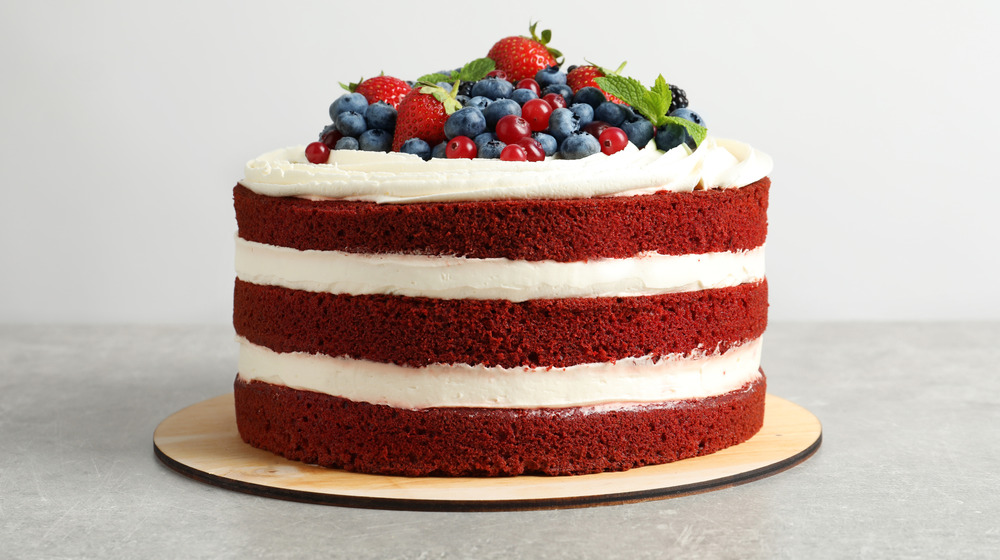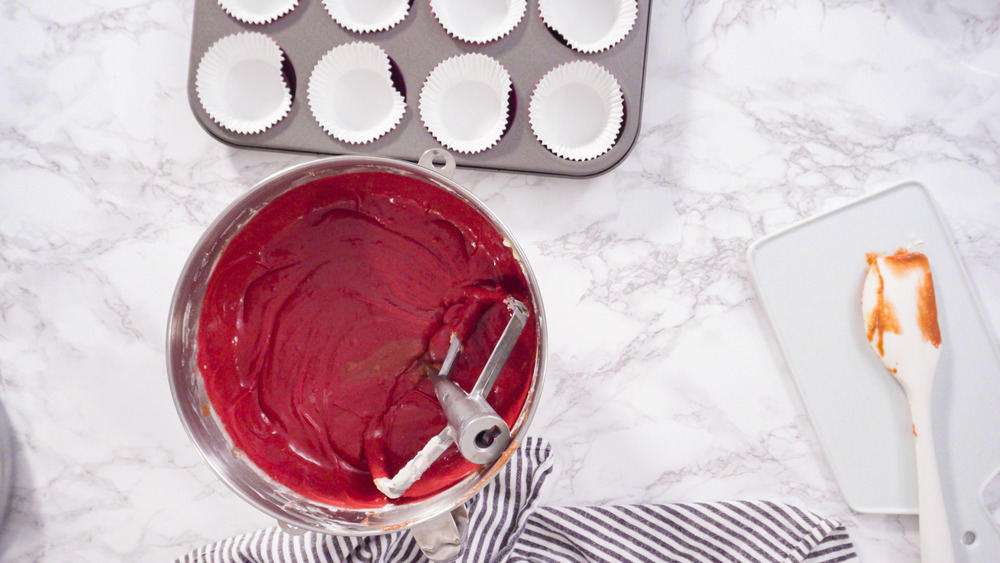The Secret To Getting A Perfectly Colored Red Velvet Cake
With its vibrant color, tender crumb, and the frequent addition of tangy cream cheese frosting, red velvet cake is a dessert beloved by many. However, if you're trying to make it at home, there's one area where many cooks can stumble — the coloring. Getting that incredibly vibrant red rather than a murky reddish-brown can be tricky. Luckily, there's one big secret that can up your chances of success — swapping the liquid food coloring for gel food coloring (via MyRecipes).
Every type of food coloring, from liquid to gel to powder, has its place in the kitchen and is suited to different dishes. However, as Kitchn explains, the water-based formula of liquid food coloring means you'll need to use a lot of it in order to get an intense hue in whatever you're making, which is what you're going for with red velvet cake. Many red velvet recipes require an ounce or more of liquid food coloring (via Martha Stewart), which can be the entire bottle! While gel food coloring can be a bit more difficult to find, it's more concentrated and delivers a much bigger punch in terms of color.
The Hummingbird Bakery has an additional tip for achieving that perfect red hue in your cake. While many bakers simply add coloring at the end, once the batter is fully mixed, The Hummingbird Bakery suggests creating a colorful paste with your gel dye, vanilla extract, and cocoa powder, which can then be incorporated into your cake batter.
How did red velvet cake get its signature color?
While it may seem inexplicable that a chocolatey cake has such a bold red hue, the color actually comes from a reaction between some of the ingredients used in the recipe when it first hit dessert plates in America.
Before red velvet entered the scene, there were simply velvet cakes, which are so called because of the smooth texture achieved with the incorporation of baking soda and vinegar or buttermilk (via Mr. Food). That's one key to the puzzle.
Chocolate lovers may prefer Dutch-processed cocoa because it has a more smooth, mellow flavor as well as a darker hue, making it clear that your dessert is packed with decadent chocolate (via Serious Eats), but natural cocoa powder has a key property. The second piece of the red velvet puzzle is the acidic state of natural cocoa powder.
Natural cocoa powder has a compound called anthocyanin, which most people know from fruits with intensely colorful juices such as blackberries and raspberries (via MyRecipes). The anthocyanin reacts with acidic mixtures (like the baking soda and buttermilk or vinegar characteristic of velvet cakes) in a specific way, creating a dark red pigment. However, beware this pigment is likely not as vibrant as what many current fans of the dessert are used to.
Not a fan of food dyes and coloring? Food52 says you can also create a naturally-tinted version of red velvet cake by using beet puree or even red wine, according to Splendid Table.

